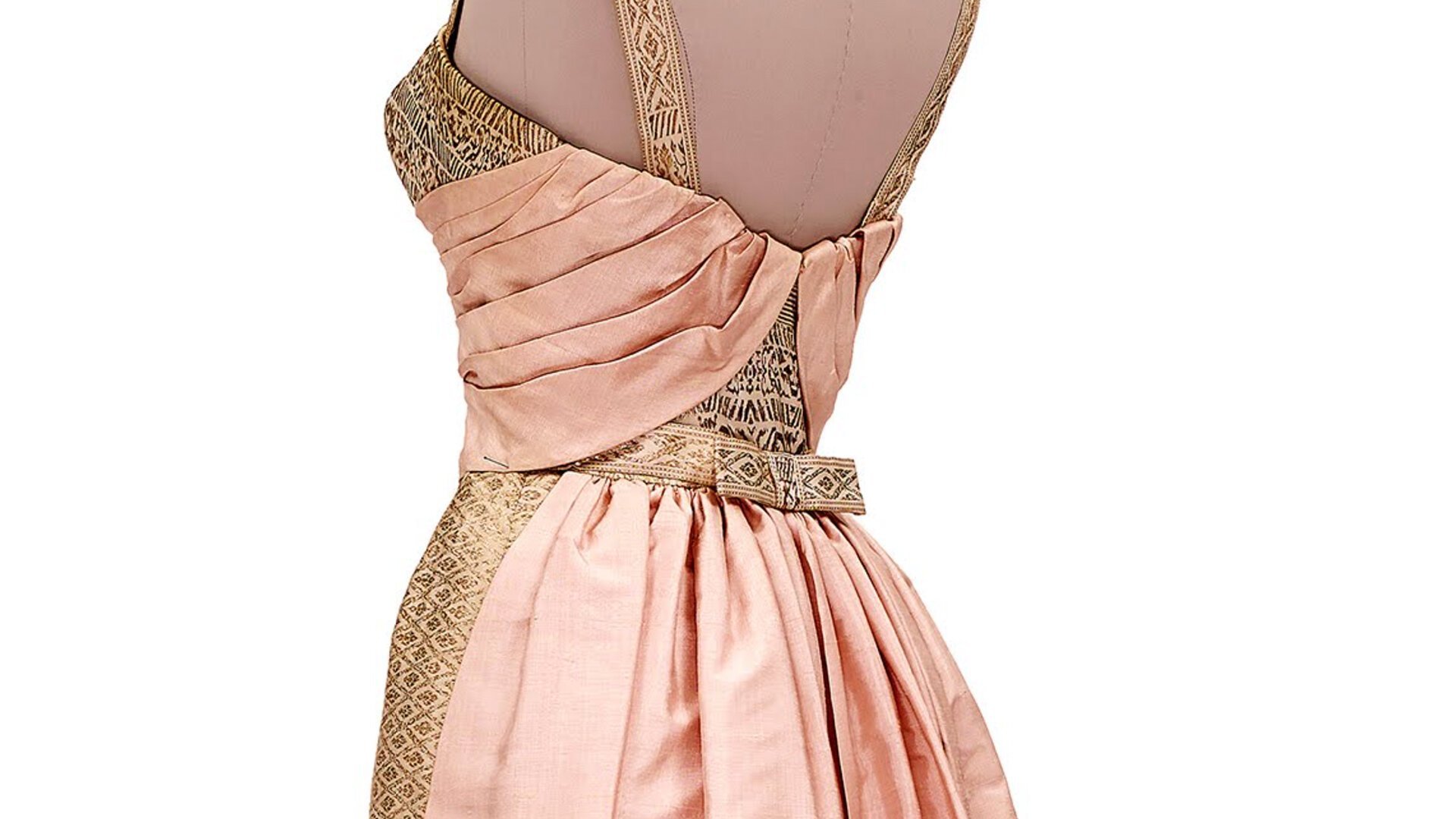Digital Encounters: ‘Fit for a Queen’
Pierre Balmain at Queen Sirikit Museum of Textiles on Google Arts and Culture
In 2017, the Google Cultural Institute partnered with over 180 collections around the world to launch ‘We Wear Culture’, a project specifically focusing on global fashion and dress. Three institutions from South-East Asia participated in this ambitious project to give open access to curated digital exhibitions and objects. They are the Ayala Museum in the Philippines, the National Heritage Board in Singapore and the Queen Sirikit Museum of Textiles in Thailand. Little did we know that the project would foreshadow the uptake of digital interventions that museums have had to take up due to Covid-19 social distancing and travel restrictions.
I am particularly taken by the digital version of a past exhibition held at the Queen Sirikit Museum of Textiles that ran from August 2016 through April 2019 titled ‘Fit for a Queen: Her Majesty Queen Sirikit Creations by Pierre Balmain’. It gives a privileged look into the garments made for Queen Sirikit by the French couturier over the span of 22 years, with over 30 full ensembles and accessories. Virtually, the high resolution of Google Art Camera images allows us to see the intricacy of embellishments otherwise lost to the eye in a physical setting, obstructed by glass vitrines. The digital exhibition is punctuated by embedded content including a Youtube video of the physical installation to see the dresses in situ.
Queen Sirikit exhibition space. Image taken from Google Arts & Culture.
The exhibition begins with an introduction to Queen Sirikit’s designation of Pierre Balmain as her wardrobe designer for a diplomatic world tour in 1960. It is evident, through the captions and photographs, that this tour successfully established Queen Sirikit’s impeccable taste, modern style and demonstrated Thailand's rich textile heritage. In the early years, most of Queen Sirikit’s garments were customised from Balmain’s collections in Thai silk. As the decade progresses, we can see bolder explorations culminating in Balmain’s commissions to make Queen Sirikit’s Thai national dress ensembles well into the 1970s.
Pierre Balmain, evening dress, 1960, silk and metal-thread brocade (phaa yok) and Thai silk. Image taken from Google Arts & Culture.
From the outset, it is illustrated that Balmain’s engagement as couturier to Queen Sirikit was a balance between Thai and European craftsmanship. Balmain designed the Western-style clothes for the Queen’s continued international travels, including accessories that were commissioned to match the Queen’s wardrobe through the seasons. He also employed the connoisseurship of François Lesage, whose house provided much of the hand-work and embellishment. In the early 1970s, the Queen worked with Balmain and Lesage to promote Thai village silks by incorporating them into fashionable Western silhouettes. We are able to view specific Thai textiles ranging from ikat to court brocades that were given a couture finish. For example, stunning examples of phaa yok (silk and metal thread brocade) are used in evening dresses which we can zoom in on. Guided captions pointing out details such as the Queen’s favourite garments add intimacy and wonder. Each garment is accompanied with information about the occasion Queen Sirikit wore the ensemble, showing us the intentional relationship between dress and the identity she presented to the public. We also see how both Balmain and Queen Sirikit left an imprint on one another, with techniques and silhouettes Balmain custom made for the Queen making their way into his main collections. For example, we are told an anecdote of how a bouffant cocktail dress made for her in 1960 made its way into Balmain’s Spring 1963 collection.
Pierre Balmain, close-up of an evening dress in Thai National Style, 1964, Thai silk and gold-meta thread brocade (phaa yok). Image taken from Google Arts & Culture.
The format of Google Arts & Culture exhibitions is perfect for online readership. For example, all the objects in the exhibition can be viewed on augmented reality through the app. With the rise of digital experiences, we are beginning to understand that the digital exhibition can serve as a way to entice physical viewership instead of challenging it. The sumptuous images of Queen Sirikit’s wardrobe are reminders of the treasures that await us when borders reopen in our region.
See the full exhibit here.



